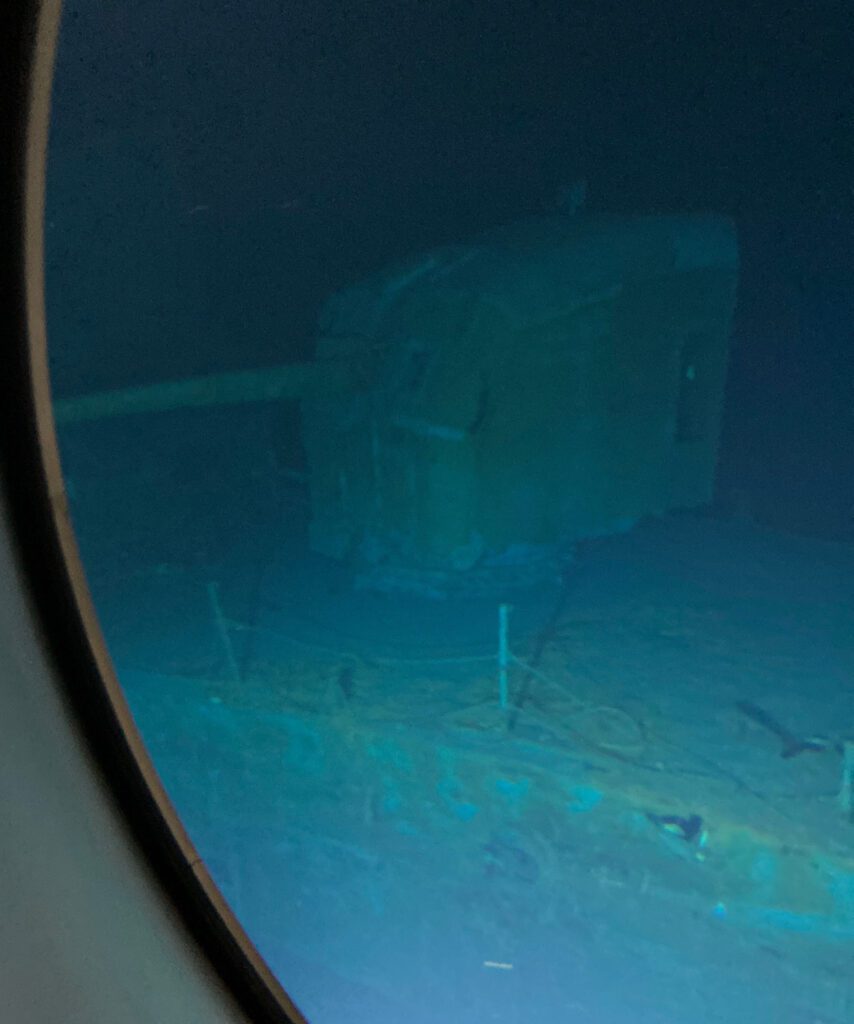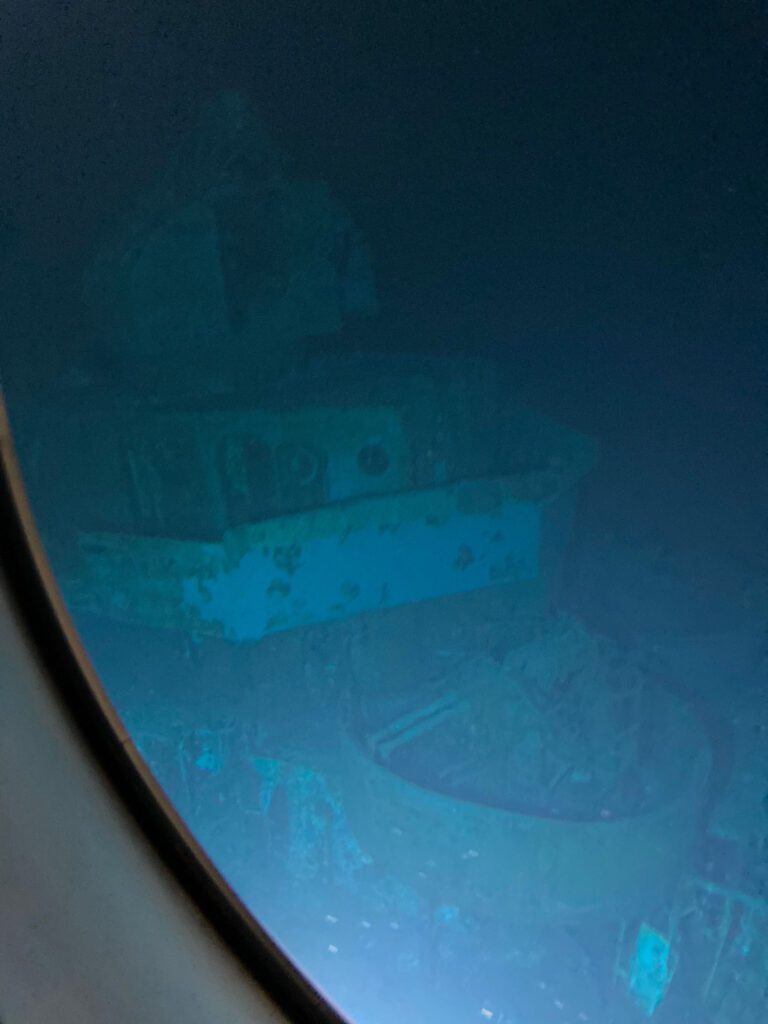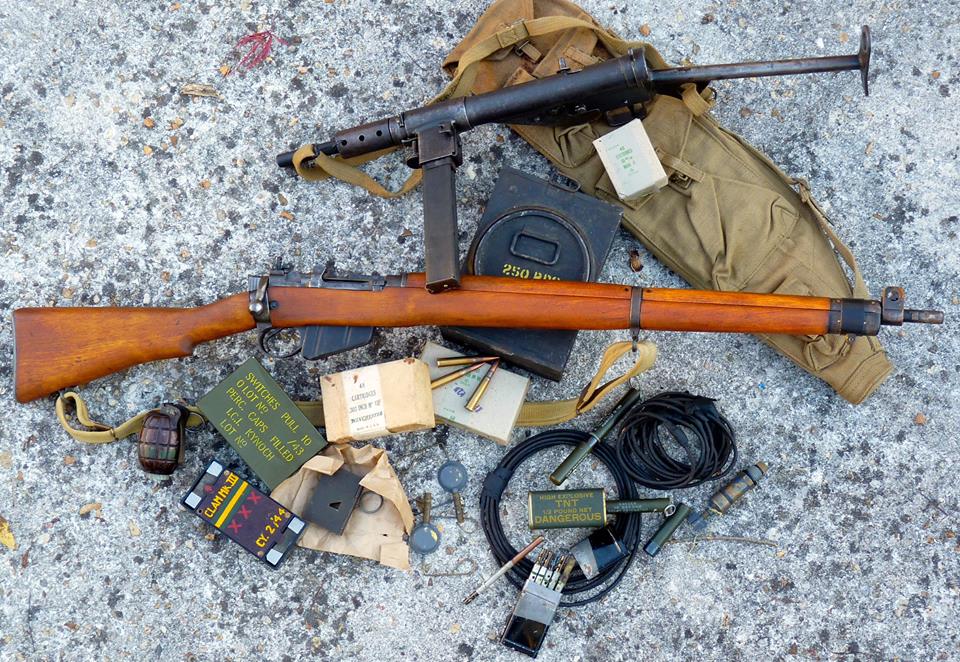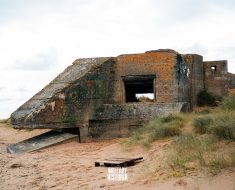USS Johnston. It went down during a battle with the Japanese ship the Yamato in 1944. Of her 327 crewmen, 186 perished when it sank.
By some estimates, there are more than three millions shipwrecks on ocean floors and seabeds. That number includes the simplest canoe crafted 10,000 years ago from a single log and also modern, high tech vessels built in the 21st century.
One of those shipwrecks is a famous World War II vessel, the USS Johnston.
The battle took place off the island of Samar, as the Americans fought to take control of the Philippines from the Japanese. In an area known as the Philippine Trench, the USS Johnston sank to the coldest, deepest, murkiest stretch of the vast Philippine Sea.
It rests on the ocean floor at almost four miles straight down, half again as much as the RMS Titanic.

USS Johnston
The Philippine Trench, at its lowest point occurs 10,540m below sea level. The trench is so deep that if Mount Everest were dropped in it, its summit would still be more than a mile underwater.
Read More: U-Boat “Packed With Gold” Famed Treasure Hunter Has Left Clues
Victor Vescovo has made his life after retiring from the U.S. Navy all about challenges. He’s a self described “hardcore mountain climber” and any undertakings that would daunt an ordinary man seem to animate him.
Finding the USS Johnston was just such an undertaking. The legend of the USS Johnston has compelled many to find the shipwreck. The Vulcan Organisation even discovered the wreck on October 30, 2019. However, they could not positively identify it because of limited resources. Vescovo wasn’t going to give up as easily.

Huge Financial Costs
In an interview with the BBC, Vescovo said he always thought that finding the vessel was not a question of whether modern technology was up to the task but more a matter of financial funding. Such an expedition to verify the ship’s location would be incredibly costly. “So I cut a cheque,” he said.
Once the money was in place, his team got to work developing the software needed to plunge into such a dark and cold environment. It took three years, but eventually he and a colleague, naval historian Parks Stephenson, climbed into their high-tech submarine and dove into the murky water.
Their first trip revealed nothing. A second dive revealed nothing either. After regrouping and heading to a new location, Vescovo and Stephenson struck gold.

“We found the front two thirds of the ship (were) in brilliant, intact form, with the (naval identification) number right there, 557. Positive identification.” Although Vescovo was enormously satisfied that he and his team found the USS Johnston, he has no desire or intention of exploring it any further.
His philosophy regarding military vessels is: “Look but don’t touch… any military wrecks belong to the country that they’re from, regardless of where they are…”
Read More: Point du Hoc – The Lost Battlefield
Not only do these wrecks deserve a hands off approach, the personnel do too. Vescovo said that even though there are no bodies or remains due to the time spent in salt water the site should be respected as an underwater mausoleum.
Yamato
“The bodies are long gone, but the ship itself is remarkably well preserved” Vescovo told the BBC. He could even make out small dings and scars from the shelling it took from the Yamato. “Even the ship’s guns were still pointing at an invisible enemy – an eerie portrait of a ship mid battle” he said.

The USS Johnston (DD-557) was a Fletcher-class destroyer used by the U.S. Navy during World War Two. It was launched in March 1943 by the Seattle-Tacoma Shipbuilding Corporation. The ship was commissioned on October 27, 1943.
The ship was part of Task Force 77, which fought in the Battle of Samar on October 25, 1944. It was the most significant battle in the Battle of Leyte Gulf – the biggest naval battle in history. The USS Johnston’s mission was to protect U.S. aircraft carriers and transport cargo from the Imperial Japanese Navy. The force was greatly outnumbered by the Japanese capital ships.
Will Stay Where it is
Towards the end, the destroyer engaged in a heated battle against Yamato – the largest and most powerful battleship ever built. The ship continued fighting despite getting struck with multiple shells until eventually sinking.
Read More: WW2 Shipwreck: Time to Remove 1400 Tons of Explosives
Now that the USS Johnston has been positively identified and its resting place is known, the ship’s fate rests in the hands of the U.S. Navy. Vescovo suspects they will allow the vessel to stay where it is, far below the surface in waters rarely glimpsed by man. He hopes that no one attempts to go closer than he did – examining the ship at a respectful distance.
The coordinates of the shipwreck are as follows:
Latitude: 11.7667
Longitude: 126.1500bb
Up next on Vescovo’s list of underwater sites he hopes to explore is the Yamato, the very ship that sank the USS Johnston. It sank in 1945, off the coast of Japan.
But as he believes about all military vessels, any trip to access it will depend largely on the Japanese people. It belongs to them, and the Japanese government. Vescovo will not approach it without their express consent.






